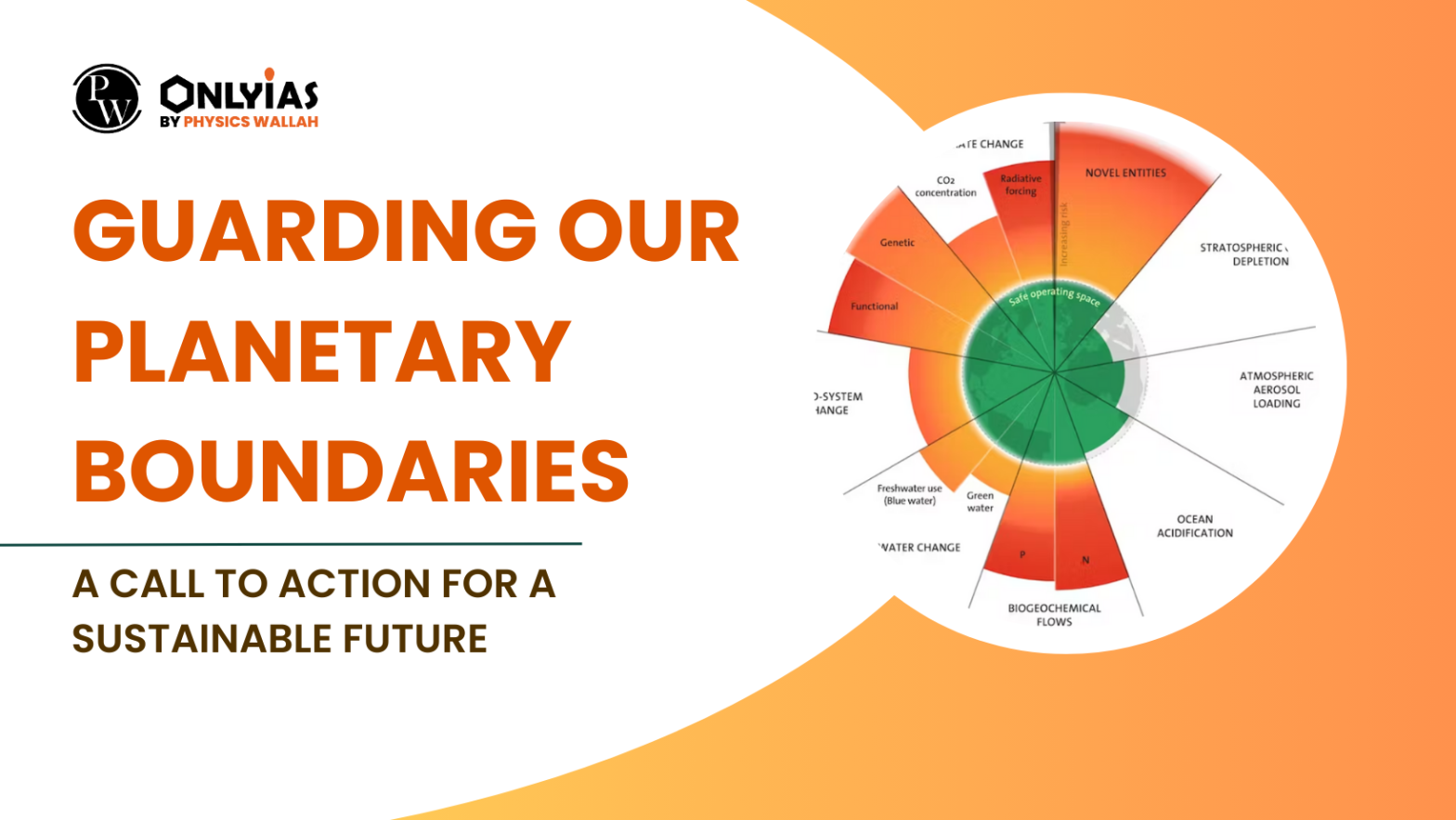Context: This article is based on an Editorial “What are ‘planetary boundaries’ and why should we care?” which was published in Down to Earth. In 2009, 28 internationally renowned researchers identified and quantified a set of nine planetary boundaries within which humanity can continue to develop and feel good in the future. If we cross these limits, abrupt or irreversible environmental changes can occur with serious consequences for humankind.
| Relevancy for Prelims: Planetary Boundary and Impacted and non-impacted boundaries.
Relevancy for Mains: Planetary Boundaries, Impacted and non-impacted boundaries and steps need to conserve environmental changes. |
About Planetary Boundaries
- A planetary boundary is an indicator – recognized and adopted at the European and international levels – which shows us the thresholds that must not be exceeded, as it risks causing abrupt environmental changes.
- In practice, a planetary boundary is intended to serve as a benchmark, to help humanity develop and prosper without threatening its ecosystem or sacrificing biosphere integrity.
- Planetary boundaries are established as strategic objectives to ensure a global balance and overall earth system functioning.
- In addition to informing the general public, environmental boundaries allow for the assessment of interactions between different domains, and they provide a comprehensive and cross-cutting view of planetary risks
Identified Nine Planetary Boundaries:
- Climate Change
- Change in Biosphere Integrity (biodiversity loss and species extinction)
- Stratospheric Ozone Depletion
- Ocean Acidification

- Biogeochemical Flows (phosphorus and nitrogen cycles)
- Land-system Change (for example deforestation)
- Freshwater Use
- Atmospheric Aerosol Loading (microscopic particles in the atmosphere that affect climate and living organisms)
- Introduction of Novel Entities (consisting of microplastics, endocrine disruptors and organic pollutants).
Key Highlights of the Study about Planetary Boundaries known
- Climate Change:
- The set limits were 350 parts per million (ppm) and 1 Watt per square meter (Wm−2), respectively. Currently, this has reached 417 ppm and is 2.91 Wm−2.
- Biosphere Integrity:
- Regarding biosphere integrity, the researchers maintained a limit of less than 10 extinctions per million species-years.
- The study estimated the extinction rate of over 100 extinctions per million species-years, putting approximately one million of the 8 million plant and animal species at risk of extinction.
- Biogeochemical Flows:
- The initial boundary was set at 11 teragrams (Tg) for Phosphorus and 62 Tg for Nitrogen. However, presently it is 22.6 Tg and 190 Tg, respectively.
- Novel Entities:
- The planetary boundary of novel entities was determined to be zero.
- However human influence on novel entities, including microplastics, endocrine disruptors, and organic pollutants, has exceeded this zero boundary, indicating humans have surpassed this limit as well.
- Safe Boundaries:
- Stratospheric ozone depletion, aerosol loading and ocean acidification were found to be within the planetary boundary, remaining within safe limits.
The Path Ahead to safeguard the Planetary Boundaries:
- Launch conservation initiatives with the aim of safeguarding biodiversity, restoring ecosystems, and safeguarding endangered species and genetic diversity to protect overhealth of Planetary Boundaries.
- Embrace circularity as a means to foster resource regeneration, minimizing waste and ensuring that valuable materials are continually repurposed rather than discarded to safeguard the Planetary Boundaries.
- Enforce stringent regulations on waste disposal, with a focus on encouraging recycling and decreasing pollution from novel entities such as microplastics.
- Empower communities to actively engage in sustainable practices, fostering a collective sense of responsibility for environmental stewardship.
- Give priority to climate mitigation strategies to limit temperature rise and prevent further breaches of the Planetary Boundaries related to climate change.
- Advocate for zero-emission technologies and reduce carbon footprints through incentives that encourage the adoption of clean energy and sustainable transportation.
Conclusion
- In a world where we share this delicate planet, it’s crucial to recognize the limits that ensure our future. We’ve pushed some planetary boundaries dangerously close to the edge, but there’s still hope.
- By valuing biodiversity, reducing waste, and embracing sustainable practices, we can protect our planetary boundaries and secure a better tomorrow for all.
![]() 21 Sep 2023
21 Sep 2023


